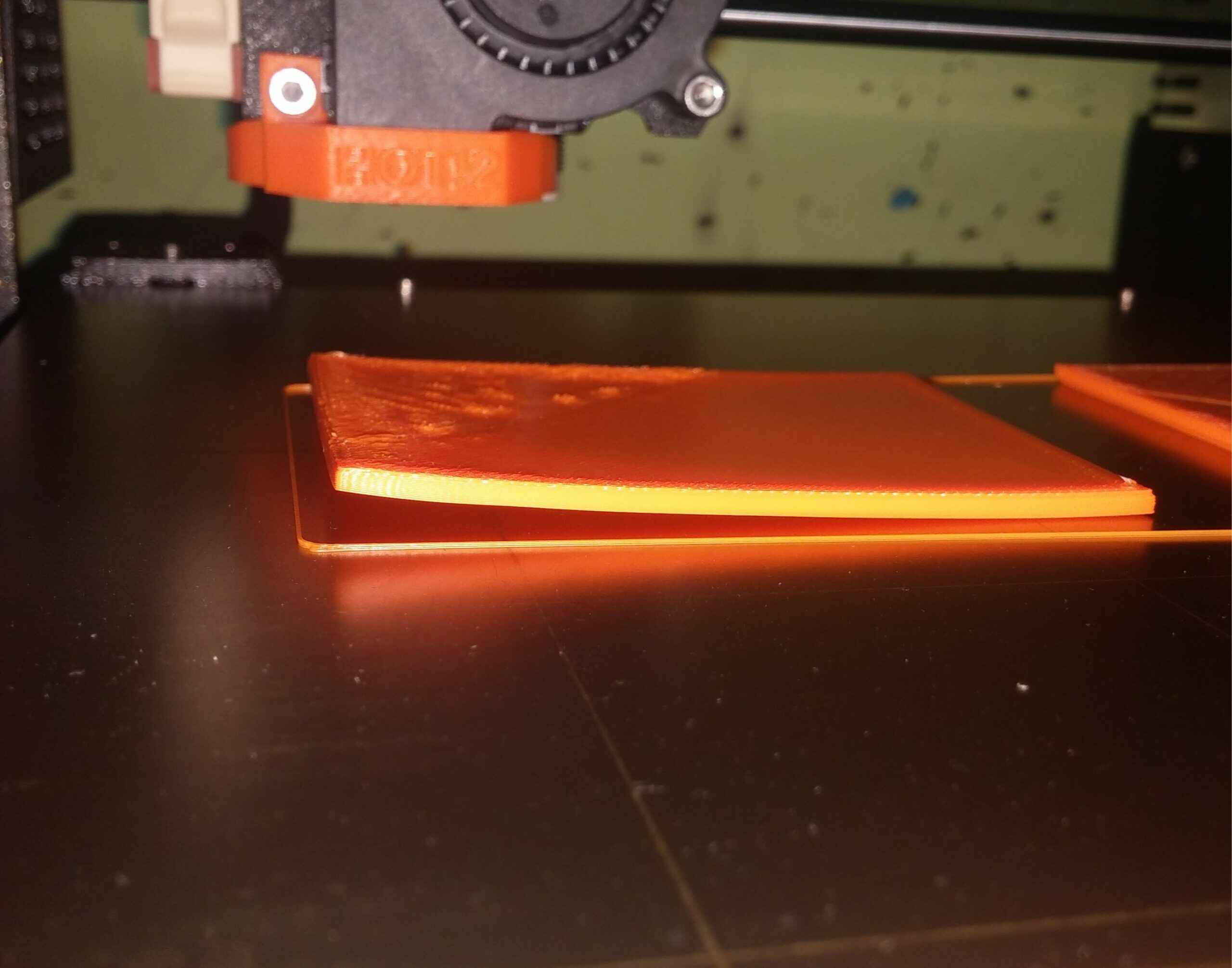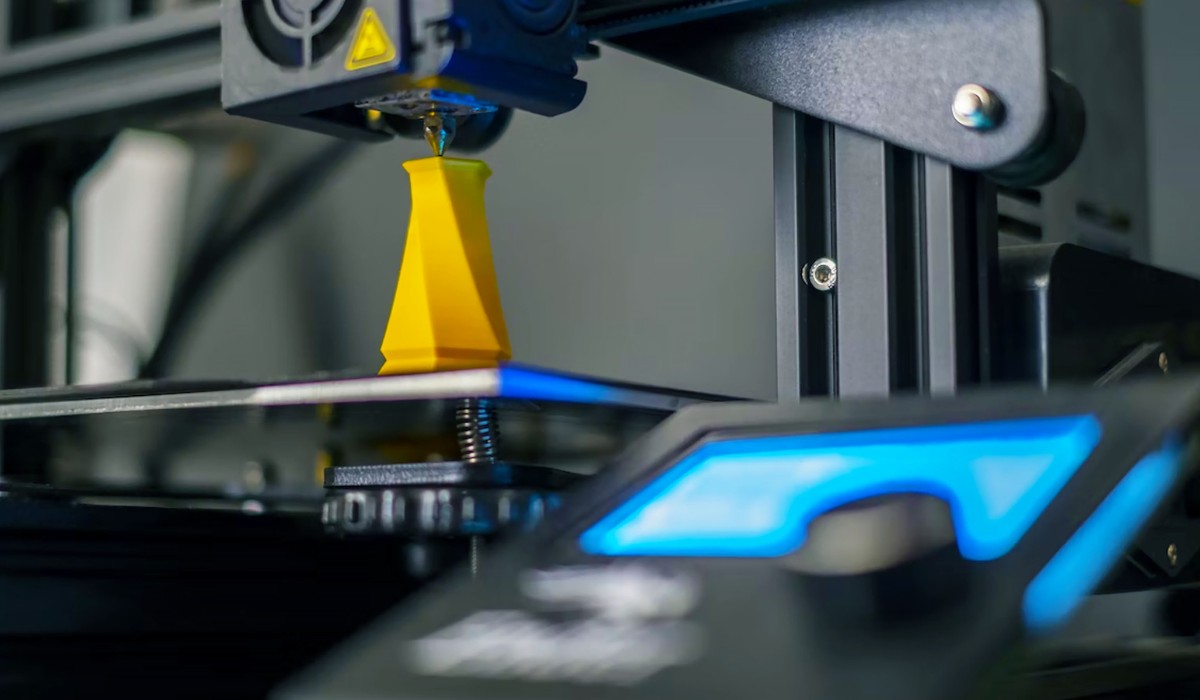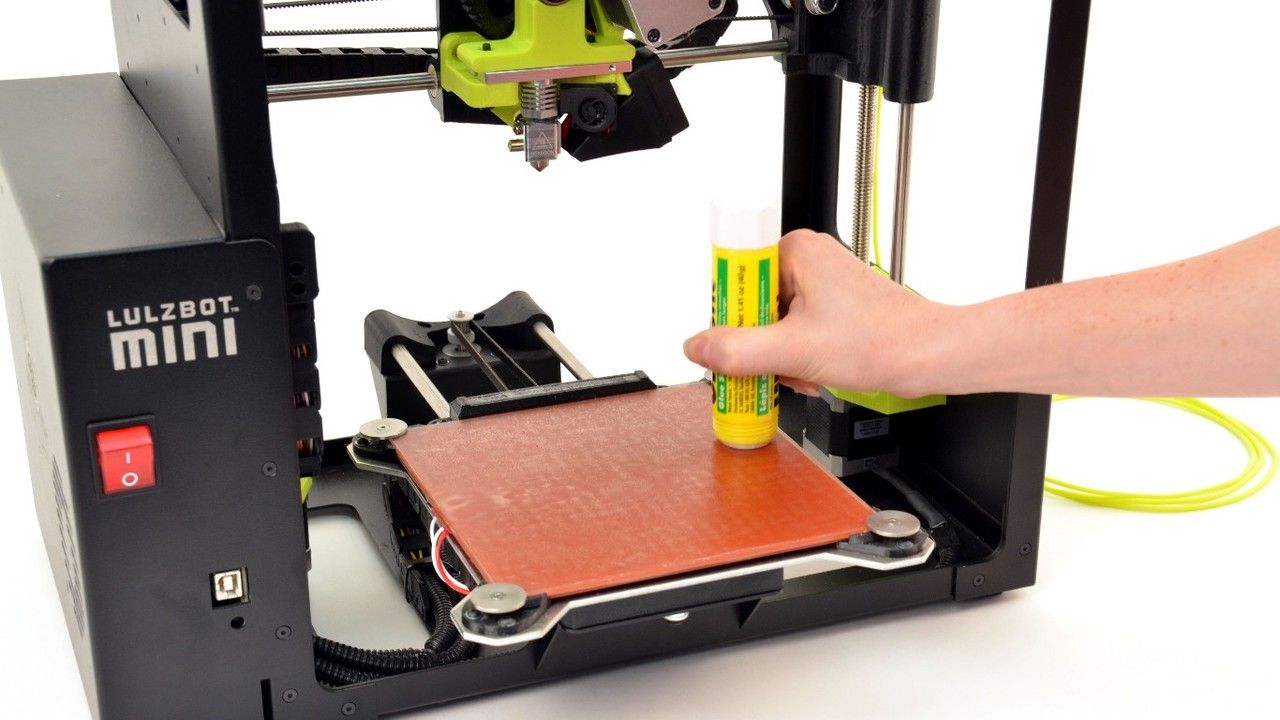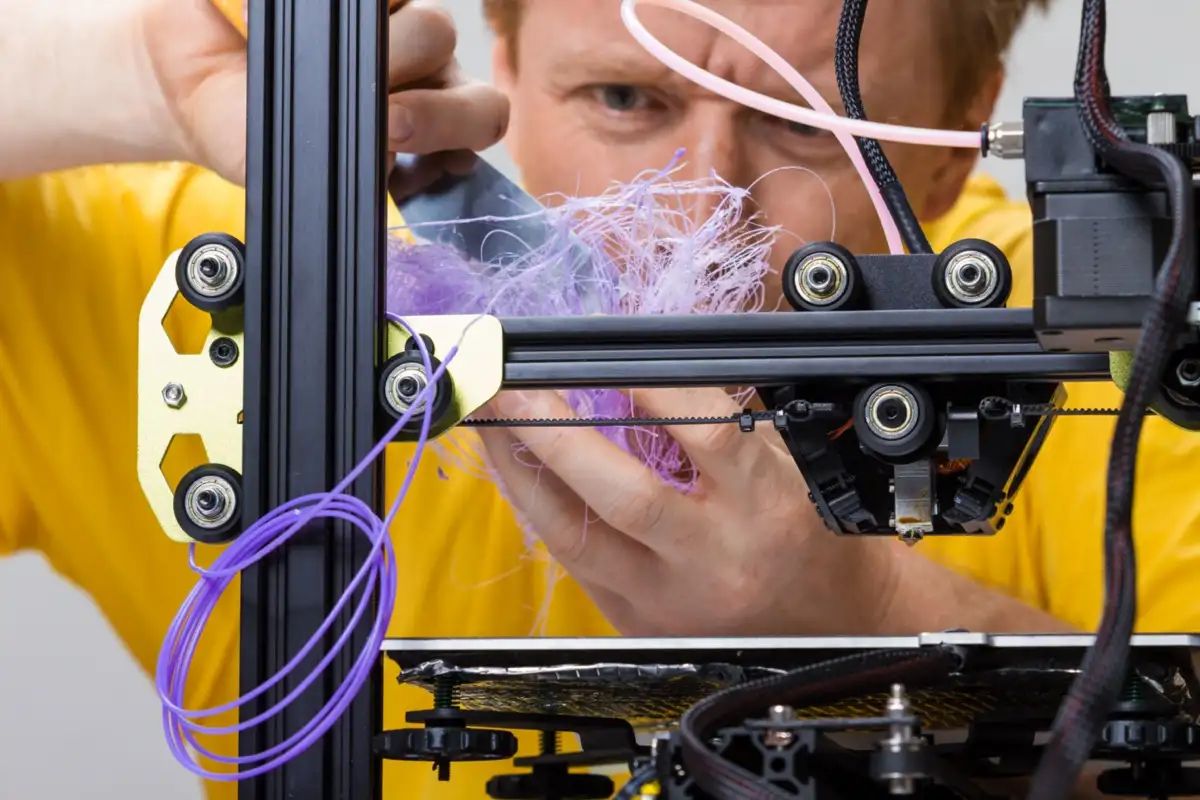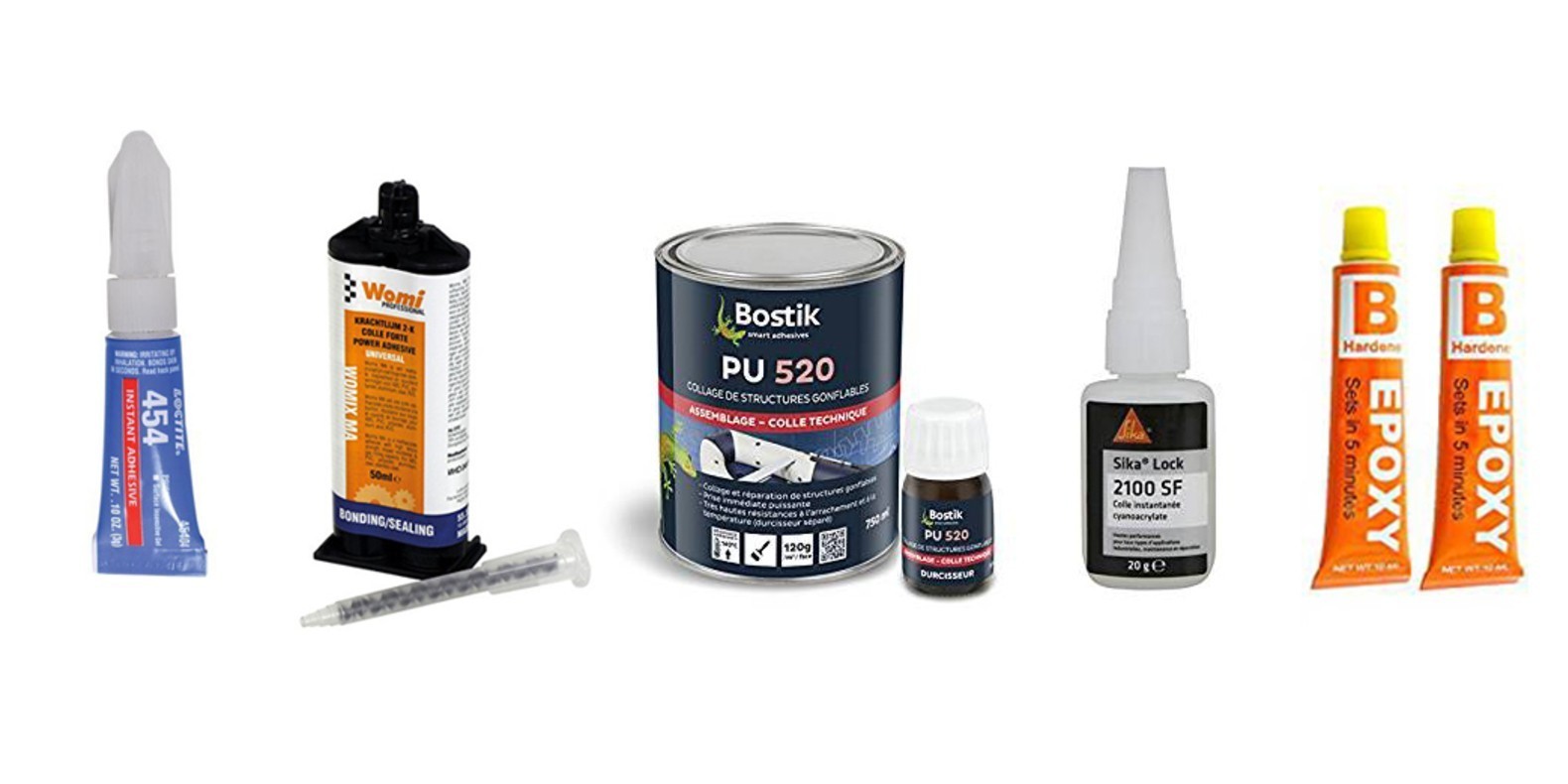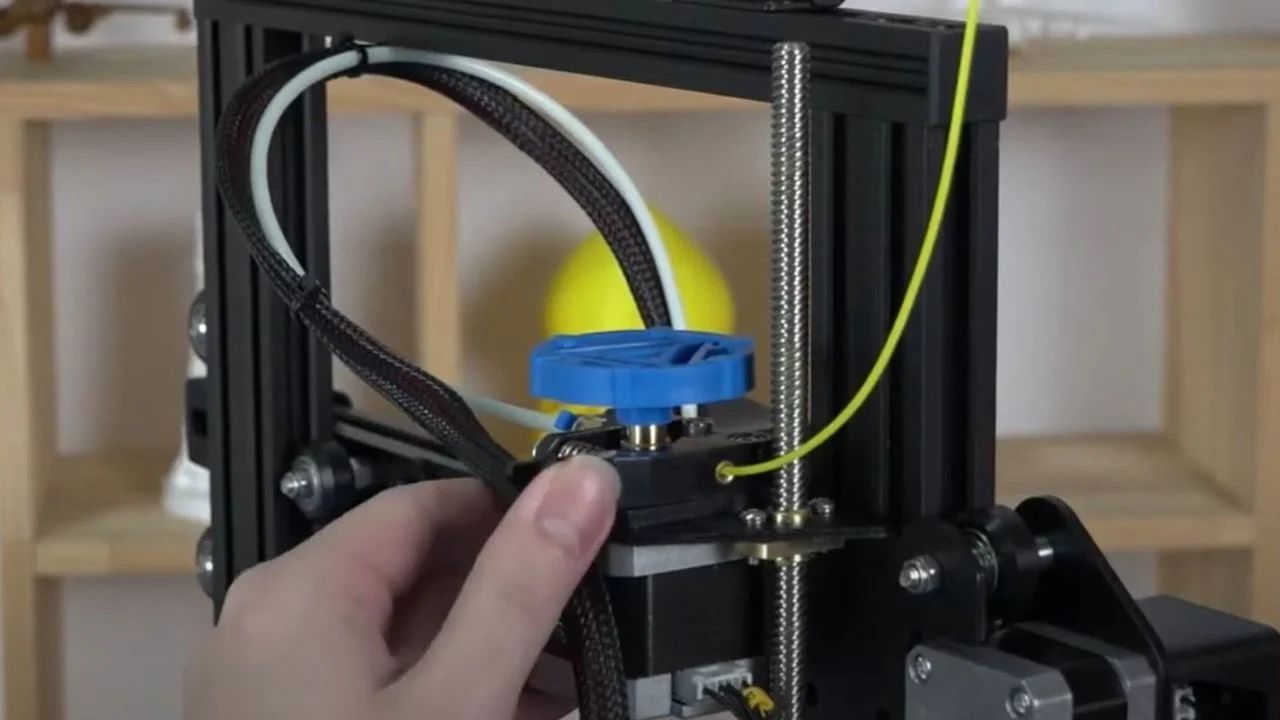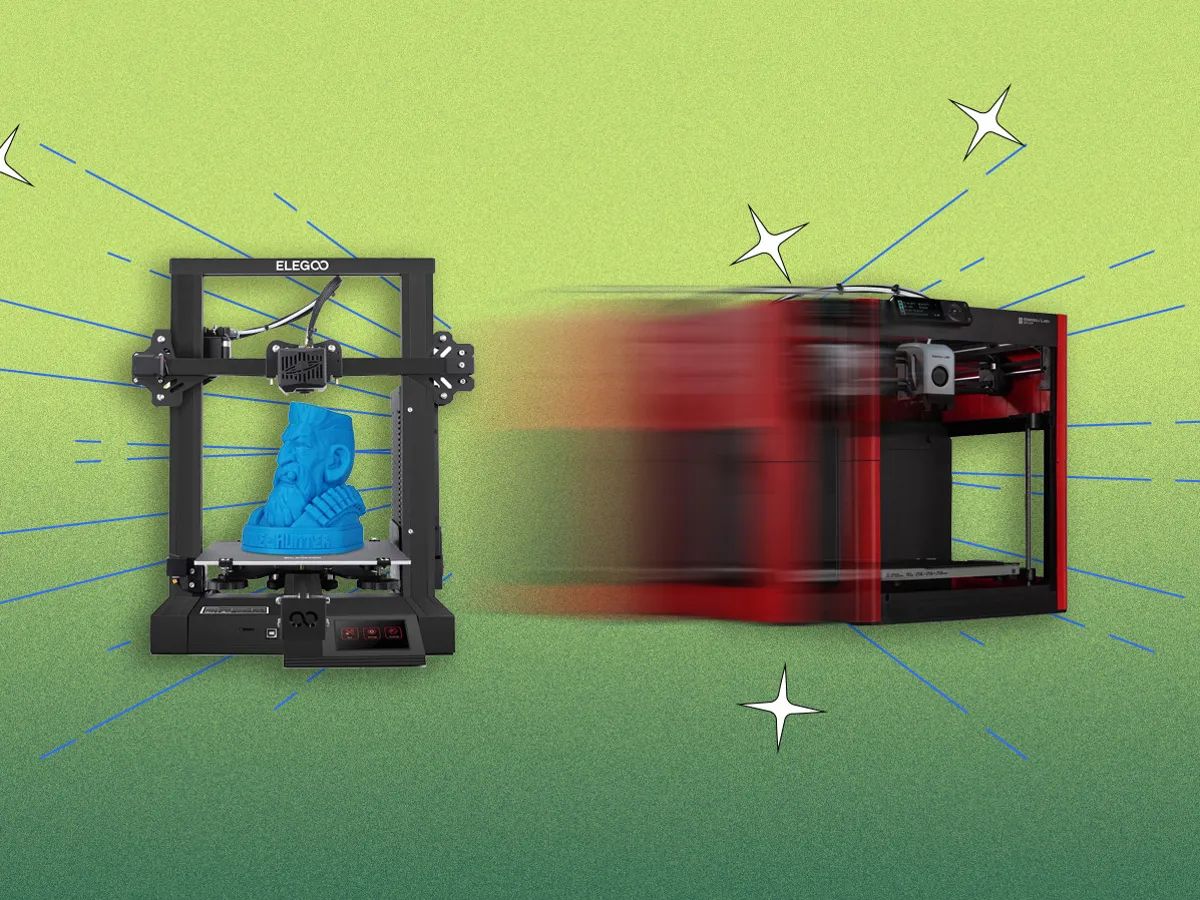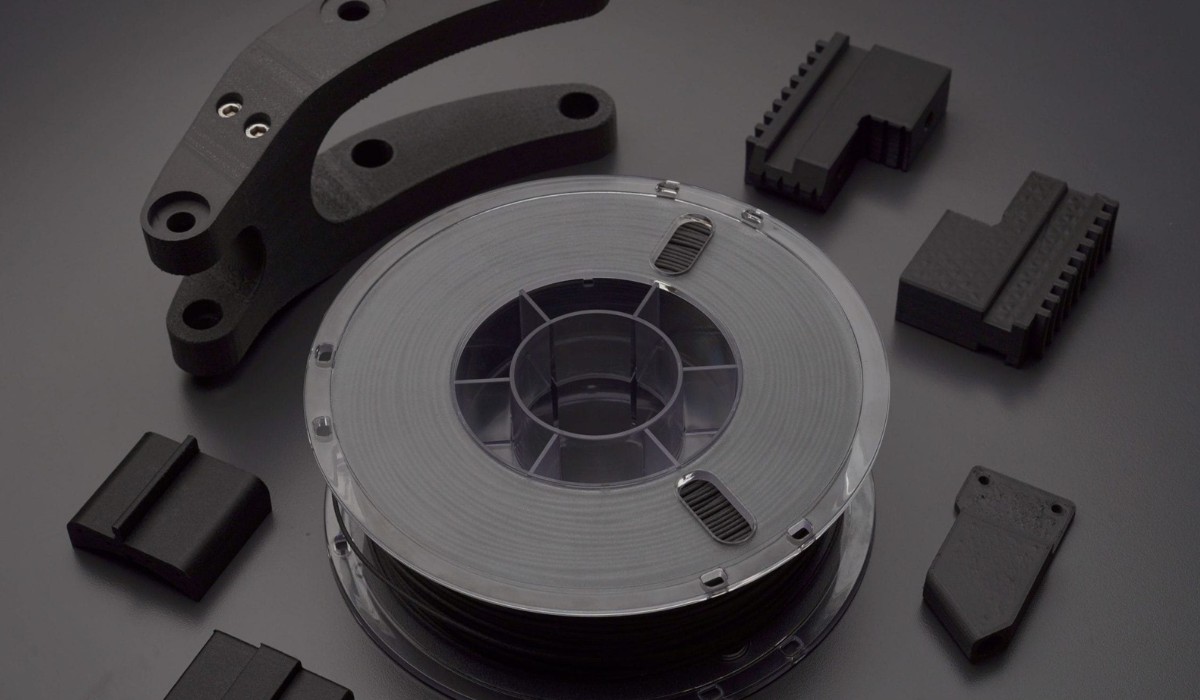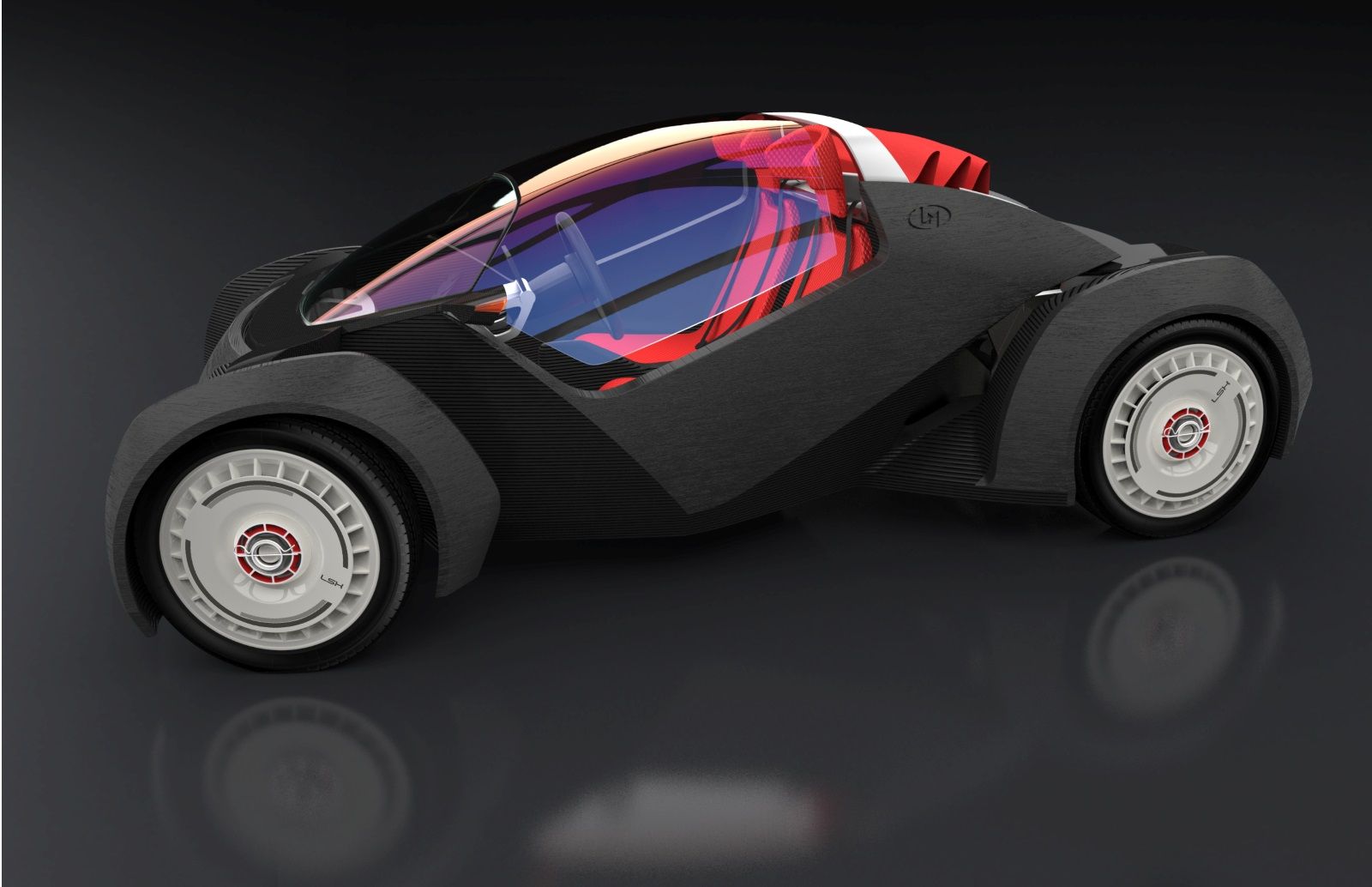Introduction
3D printing technology has revolutionized various industries, enabling the creation of intricate and precise three-dimensional objects. However, one of the common challenges faced by 3D printing enthusiasts is warping, where printed parts detach or warp from the build surface during the printing process. This issue can lead to failed prints and wasted materials, causing frustration and delays for users.
Understanding the factors that contribute to warping and implementing proper techniques to prevent it are crucial for achieving successful 3D prints. In this article, we will explore the causes of warping and provide strategies to mitigate this issue.
Warping primarily occurs due to the difference in cooling rates between the layers of filament during the printing process. As the layers cool down at different rates, they can contract and pull on each other, resulting in warping or lifting. Additionally, inadequate bed adhesion and incorrect bed and nozzle temperatures can exacerbate the problem.
The good news is that there are several steps you can take to minimize warping and improve the success rate of your 3D prints. From choosing the right bed surface and implementing proper bed adhesion techniques to adjusting temperatures and utilizing brims or rafts, this article will guide you through the process of preventing warping on a 3D printer.
By implementing these strategies, you can enhance the overall printing experience and achieve high-quality prints with minimal warping. So, let’s delve into the details and explore the various factors and techniques to stop warping on a 3D printer.
Understanding Warping
Warping is a phenomenon that occurs in 3D printing when printed parts detach or warp from the build surface during the printing process. This can result in distorted or failed prints, leading to frustration for users. To effectively prevent warping, it is essential to understand the underlying causes of this issue.
One of the primary factors contributing to warping is the difference in cooling rates between the layers of filament. As each layer cools down, it contracts and can pull on the previous layers, leading to warping or lifting. This is especially prominent in materials such as ABS, which tends to have higher shrinkage rates.
Another cause of warping is inadequate bed adhesion. If the first layer of a print does not adhere properly to the build surface, it can lead to subsequent layers lifting or detaching during the printing process. This can occur due to an unlevel bed, insufficient bed temperature, or using the wrong type of bed surface for the filament being used.
Furthermore, incorrect bed and nozzle temperatures can also contribute to warping. If the bed temperature is too low, the printed part may cool unevenly, increasing the chances of warping. On the other hand, if the nozzle temperature is too high, it can elevate the temperature of the already printed layers, causing them to deform or warp.
By understanding these factors and their impact on the printing process, you can take appropriate measures to minimize warping and improve your print success rate. In the upcoming sections, we will explore various techniques and strategies that can be employed to prevent warping on a 3D printer. From choosing the right bed surface to adjusting temperatures and implementing additional measures, these guidelines will help you overcome common warping challenges.
Remember, successful 3D printing requires careful attention to detail and a thorough understanding of the materials being used. By implementing the techniques discussed in the following sections, you can achieve high-quality prints with minimal warping, maximizing the potential of your 3D printer.
Factors that Contribute to Warping
Several factors can contribute to warping in 3D printing. By identifying and understanding these factors, you can take proactive measures to minimize warping and improve the overall quality of your prints.
One of the primary factors is the cooling rate of the printed layers. As each layer cools at a different rate, the contraction can create forces that lead to warping. Materials such as ABS are particularly susceptible to warping due to their high shrinkage rates, making effective cooling strategies crucial.
Another factor is improper bed adhesion. If the first layer of your print does not adhere properly to the build surface, it can cause subsequent layers to lift or detach. This can occur if the bed is unlevel or if the bed temperature is too low for the specific filament being used. Ensuring proper bed adhesion is critical to preventing warping.
The choice of bed surface also plays a significant role. Different filaments require different bed surfaces to achieve optimal adhesion. For example, materials like PLA often adhere well to glass beds, whereas ABS may require a heated bed with specialized adhesive materials like BuildTak or painter’s tape. Using the right bed surface for the filament being used can greatly reduce the chances of warping.
Another key factor is the nozzle and bed temperatures. If the bed temperature is too low, the printed part may cool unevenly, leading to warping. Similarly, if the nozzle temperature is too high, it can elevate the temperature of the already printed layers, causing them to warp or deform. Finding the optimal temperature settings for your specific filament is crucial to minimize warping issues.
Humidity and moisture absorption by filaments can also contribute to warping. Hygroscopic materials like Nylon tend to absorb moisture from the air, leading to changes in filament properties and increased warping. Proper storage of filaments in sealed containers with desiccant can help prevent moisture-related warping.
Finally, the geometry and design of the printed object can influence the occurrence of warping. Large, flat surfaces that cool at different rates are more prone to warping. Adding support structures, chamfers, or fillets to sharp corners can help alleviate stress and reduce warping tendencies.
By considering these factors and implementing appropriate measures, such as optimizing cooling, ensuring proper bed adhesion, adjusting temperature settings, and selecting appropriate filaments and designs, you can significantly reduce the occurrence of warping in your 3D prints. In the following sections, we will explore specific techniques and strategies to address these factors and achieve successful, warp-free prints.
Choosing the Right Bed Surface
The choice of bed surface is crucial in preventing warping in 3D printing. Different filaments have varying requirements for bed adhesion, and selecting the appropriate bed surface can greatly improve the success rate of your prints.
One popular and widely used bed surface is glass. Glass provides a smooth and flat surface that allows for excellent adhesion with materials like PLA. Applying a thin layer of adhesive, such as hairspray or glue stick, can further enhance adhesion on a glass bed. However, it’s important to note that some filaments, such as ABS, may require a heated bed for proper adhesion on glass.
Another common bed surface is BuildTak or similar adhesive sheets. These sheets have a textured surface that helps filament adhere more effectively. BuildTak is particularly popular for printing materials like ABS, PETG, or flexible filaments. Applying the sheet to your print bed provides a reliable and consistent surface for preventing warping.
Painter’s tape is also a viable option for certain filaments. It provides a slightly rough surface that promotes adhesion with materials like ABS. Painter’s tape is affordable and easy to apply, making it a popular choice for those starting out with 3D printing. However, keep in mind that the tape should be replaced regularly to maintain its adhesion properties.
For those using specialty filaments like nylon, a PEI (Polyetherimide) sheet can be an excellent bed surface. PEI offers exceptional adhesion and can withstand higher printing temperatures. It provides a reliable grip for challenging materials that are prone to warping.
It’s worth noting that each bed surface may require specific setup or maintenance. For example, glass beds may need to be cleaned or lightly sanded to ensure optimal adhesion. Adhesive sheets like BuildTak can wear out over time and might need replacement. Understanding the requirements of your chosen bed surface and following proper maintenance procedures will help you achieve consistent and reliable adhesion, reducing the risk of warping.
Experimentation and testing may be necessary to determine which bed surface works best for your specific materials and prints. Additionally, factors like print speed, temperature, and cooling settings can also impact bed adhesion and reduce the likelihood of warping. Keep these considerations in mind as you navigate the world of bed surfaces, and remember that understanding the needs of your chosen filament is essential for successful 3D prints.
Applying Proper Bed Adhesion Techniques
Ensuring proper bed adhesion is a critical step in preventing warping during 3D printing. By implementing effective bed adhesion techniques, you can enhance the grip between your print and the build surface, reducing the risk of detachment or warping.
One commonly used method is a leveled bed. A leveled bed ensures that the print surface is flat and parallel to the printer’s nozzle. This not only promotes proper bed adhesion but also helps in achieving consistent print quality. Regularly check and adjust the bed leveling to maintain optimal adhesion.
Another technique is achieving the right first layer height. The first layer plays a significant role in establishing adhesion and should be squished slightly onto the build surface. Adjusting the nozzle height or using software settings like the initial layer height can help achieve the desired level of squishing and enhance bed adhesion.
The use of a brim or a raft can also improve bed adhesion, especially for prints with a small contact area or those prone to warping. A brim is a thin layer of filament printed around the base of the object, providing additional support and improving adhesion. A raft, on the other hand, is a larger base layer that acts as a foundation for the print, improving stability and reducing the impact of warping.
Applying adhesives to the bed surface is another effective technique. Hairspray, glue stick, or specialized adhesive sprays can provide extra adhesion for materials that have difficulty sticking to the particular bed surface used. It is important to apply a thin and even layer to avoid excessive buildup or uneven adhesion.
Choosing the right bed temperature is crucial in ensuring proper adhesion. Different materials require different bed temperatures for optimal bonding. Experiment with varying bed temperatures within the recommended range for your specific filament to find the temperature that promotes adequate adhesion without causing excessive warping or lifting.
Additionally, adjusting the printing speed for the first few layers can contribute to better bed adhesion. Slowing down the print speed during the initial layers allows for better filament flow and adhesion to the build surface, reducing the chances of warping.
Regularly cleaning the build surface is essential to maintain proper bed adhesion. Oil, debris, or residue can interfere with adhesion and lead to warping. Using isopropyl alcohol or other recommended cleaning solutions, ensure that your build surface is clean and free from any contaminants before starting a print.
By applying these bed adhesion techniques, you can significantly reduce the occurrence of warping in your 3D prints. Experimentation and finding the right combination of techniques for your specific filament and printer setup may be necessary. Remember to pay attention to bed leveling, first layer height, use of brims or rafts, adhesives, temperature settings, printing speed, and regular cleaning to ensure proper bed adhesion and successful 3D prints.
Adjusting Bed and Nozzle Temperature
Proper temperature control is essential in preventing warping during 3D printing. Adjusting both the bed and nozzle temperatures can significantly impact adhesion and minimize the chances of warping.
The bed temperature plays a crucial role in ensuring proper adhesion between the printed object and the build surface. Different materials have specific temperature requirements for optimal bonding. Some materials, like PLA, typically adhere well to a cooler bed, while others, such as ABS or PETG, may require higher bed temperatures to achieve proper adhesion.
For materials like PLA, it is generally recommended to set the bed temperature between 40-60°C. Lower bed temperatures can help improve cooling and minimize warping. However, for materials like ABS, a heated bed temperature of around 80-100°C is often necessary to achieve sufficient adhesion and prevent warping.
When adjusting the bed temperature, it is important to consider the ambient temperature in the printing environment. In colder environments, increasing the bed temperature slightly can compensate for the temperature difference and improve adhesion. Conversely, in warmer environments, lowering the bed temperature may be necessary to prevent excessive heating and warping.
Similarly, the nozzle temperature plays a vital role in preventing warping. The nozzle temperature affects the melt viscosity of the filament and can impact adhesion and layer bonding. Each filament has its specific temperature range for optimal printing. It is important to consult the filament manufacturer’s recommendations or conduct calibration prints to determine the appropriate nozzle temperature.
For most filaments, nozzle temperatures between 180-230°C are common. However, keep in mind that PLA generally requires lower temperatures (around 190-220°C) compared to materials like ABS or PETG, which may require higher temperatures (around 220-260°C) for successful printing and minimal warping.
It is worth mentioning that simply adjusting the bed and nozzle temperatures does not guarantee the elimination of warping. Other factors, such as cooling settings, bed adhesion techniques, and the actual design of the printed object, can also have an impact. That said, fine-tuning the temperature settings in combination with other strategies can significantly contribute to reducing warping issues.
Regular monitoring and potential adjustments to the temperature settings may be necessary to achieve the desired level of adhesion and minimize warping. By understanding the optimal bed and nozzle temperature ranges for your chosen filament and making adjustments as needed, you can improve bed adhesion, enhance print quality, and create successful 3D prints with minimal warping.
Using Brims or Rafts
Brims and rafts are effective techniques used in 3D printing to enhance bed adhesion and minimize warping. These structures provide additional support for the printed object, particularly for prints with small contact areas or those prone to warping.
A brim is a thin layer of filament printed around the base of the object. It extends the footprint of the print, increasing the contact area with the build surface. The brim acts as a sacrificial layer that provides better adhesion and stability during the printing process. Once the print is complete, the brim can be easily removed, leaving behind the desired object.
This technique is especially useful when printing objects with narrow bases or intricate geometries, where warping can occur due to the uneven cooling of the layers. The additional surface area provided by the brim helps distribute the forces and reduces the chances of warping or lifting.
Rafts, on the other hand, are larger structures printed at the base of the object. Unlike a brim, a raft covers the entire footprint of the print. It acts as a foundation for the actual object, providing stability and preventing warping by redistributing the forces across a larger area.
Rafts are particularly useful when printing with materials known for their high shrinkage rates, such as ABS. The raft acts as a buffer between the material and the build surface, allowing for proper adherence and minimizing the impact of warping. Once the print is complete, the object can be easily separated from the raft by gently peeling or cutting it away.
When using brims or rafts, it is important to consider their impact on print time and material usage. Both techniques require additional filament and, consequently, slightly increase the overall printing time. However, the benefits in terms of improved adhesion and reduced warping outweigh this trade-off in most cases.
Most slicing software allows for easy configuration of brim or raft settings. You can adjust the number of brim lines or the thickness of the raft according to your specific needs. It is recommended to experiment with different settings to find the optimal balance between adhesion and material usage for your prints.
By incorporating brims or rafts into your printing process, you can enhance bed adhesion and minimize warping, especially for challenging prints. These techniques provide additional support and stability during the printing process, ensuring successful outcomes and high-quality prints.
Utilizing Enclosures or Covers
Utilizing enclosures or covers during the 3D printing process can be an effective strategy to minimize warping and improve print quality. Enclosures create a controlled environment around the printer, maintaining stable temperature and reducing external factors that can contribute to warping.
An enclosure is a structure that surrounds the 3D printer, creating a contained space. It helps retain heat within the printing area, creating a more consistent temperature throughout the print. This thermal stability minimizes the temperature differential between the printed layers, reducing the chances of warping.
Enclosures can be made from various materials such as acrylic, Plexiglas, or even DIY setups using cardboard or foam boards. The enclosure should be well-ventilated to ensure sufficient airflow and prevent excessive heat buildup. Additionally, installing a temperature monitor within the enclosure can help ensure that the desired temperature range is maintained.
In addition to enclosures, covers can also be used to shield the print from drafts or external airflows. Drafts can cause abrupt temperature changes, leading to uneven cooling rates and potential warping. A cover can be as simple as a cardboard box or a custom-fit cover designed specifically for your printer model.
Enclosures and covers are especially beneficial when printing materials that are susceptible to warping, such as ABS or other high-temperature filaments. These materials require stable and controlled conditions to reduce the effects of uneven cooling and achieve optimal adhesion for successful prints.
However, it’s important to note that not all prints or materials require enclosures or covers. Filaments like PLA or PETG, which have lower shrinkage rates, may not benefit as significantly from the use of enclosures. When deciding whether to utilize an enclosure or cover, consider the specific filament you are using and its tendency to warp.
Before setting up an enclosure or cover, ensure that your 3D printer is compatible with this modification and that there is sufficient space for the enclosure without obstructing the printer’s operation or ventilation.
By utilizing enclosures or covers, you can create a controlled environment that minimizes the impact of external factors on the printing process. These setups help maintain stable temperatures and facilitate more consistent cooling, resulting in reduced warping and improved overall print quality.
Ensuring Proper Filament Storage
Proper filament storage is crucial in preventing warping and maintaining the quality of your prints. Filament, especially hygroscopic materials like nylon or certain types of filament blends, can absorb moisture from the surrounding environment, leading to changes in filament properties and increased warping tendencies.
Moisture absorbed by the filament can cause it to become brittle, resulting in poor layer adhesion and uneven cooling rates during printing. To minimize these issues, it is important to store your filament in a dry and controlled environment.
One effective way to store filament is in airtight containers with desiccant packs. These containers help keep out moisture and maintain a stable humidity level around the filament spools. Desiccant packs, such as silica gel or desiccant pouches, absorb any moisture present in the storage container.
Some filament manufacturers provide vacuum-sealed packaging for their products. If your filament is stored in vacuum-sealed packaging, it is recommended to keep it sealed until you are ready to use it. Once opened, transfer the filament to an airtight container to help preserve its quality.
Avoid storing filament in areas with high humidity or temperature fluctuations, such as basements or near windows. Direct exposure to sunlight or heat sources can also deteriorate filament quality and increase the chances of warping.
When printing, it is best to use filament that has been properly stored. If you notice excessive warping or poor print quality, consider checking the moisture content of the filament. Some filament brands offer moisture-testing indicators that change color when the filament has absorbed too much moisture.
If your filament does show signs of moisture absorption, there are several methods you can employ to dry it out. Using a filament dry box or an oven specifically designed for filament drying can help remove moisture effectively. However, be cautious and follow the manufacturer’s guidelines to avoid overheating or damaging the filament.
By ensuring proper filament storage, you can maintain the integrity of your filament and minimize the occurrence of warping. Consistently dry filament leads to improved print quality, better layer adhesion, and reduced chances of print failures.
Remember to check and maintain the storage conditions of your filament regularly. Store it in a dry and controlled environment, use airtight containers with desiccant packs, and avoid exposure to humidity and extreme temperatures. Proper filament storage is an essential aspect of preventing warping and achieving successful 3D prints.
Implementing Cooling Strategies
Implementing effective cooling strategies during 3D printing plays a crucial role in minimizing warping and achieving high-quality prints. Proper cooling helps in maintaining consistent cooling rates across layers, reducing the chances of uneven shrinkage and subsequent warping.
One of the primary methods to control cooling is by adjusting the cooling fan speed. The cooling fan blows cool air onto the printed layers, facilitating faster and more uniform cooling. However, it’s important to strike a balance between cooling and adhesion. For some materials like ABS, excessive cooling too early in the print process can lead to poor layer adhesion and increased warping. Monitoring the fan speed and adjusting it based on the material being used is key.
Most slicing software allows for customized cooling settings. Gradual fan speed increases or delayed fan activation can be useful in managing cooling rates and preventing sudden temperature changes. Experimentation and adjustments may be necessary to determine the optimal cooling settings for your specific prints and filament types.
In addition to controlling the cooling fan speed, designing the print with appropriate cooling features can also help reduce warping. The use of thinner walls, gaps, or chamfers in the design allows for better airflow and promotes more even cooling. These features help minimize internal stresses and reduce the chances of warping or deformation.
Depending on the complexity of the print, you can also consider using specific cooling towers or bridges. These structures are intentionally printed separately from the main object and serve as a benchmark to evaluate cooling effectiveness. By monitoring the quality and consistency of the cooling towers or bridges, you can make adjustments to optimize your cooling strategy and minimize warping.
It’s important to note that different materials have specific cooling requirements. PLA, for example, benefits from relatively higher fan speeds to ensure efficient cooling and minimize warping. On the other hand, materials like ABS may require fewer cooling effects or even disabling the cooling fan for the initial few layers to promote better layer adhesion.
Regular maintenance of the cooling fan is essential as well. Make sure it operates smoothly without any obstructions or debris that might affect the airflow. Cleaning the fan periodically to remove dust and dirt buildup ensures optimal performance during the printing process.
By implementing effective cooling strategies, you can achieve better print quality and reduce the occurrence of warping. Experiment with fan speed settings, incorporate cooling features in your print designs, and adjust cooling parameters based on the characteristics of the filament being used. A well-managed cooling process promotes even cooling rates and helps preserve the integrity of your prints.
Troubleshooting Common Warping Issues
Despite taking precautionary measures, warping can still occur during 3D printing. Understanding common warping issues and knowing how to troubleshoot them can help you overcome these challenges and achieve successful prints. Let’s explore some common warping issues and their potential solutions.
1. Warping at the Corners: Warping at the corners is a common problem, especially for larger prints or those with sharp angles. To address this, try increasing the bed temperature slightly or using a brim or raft to provide extra support and improve adhesion at the corners. Adding fillets or chamfers to sharp edges can also help distribute stress and reduce warping tendencies.
2. Warping on Large Flat Surfaces: Prints with large, flat surfaces are more prone to warping due to differential cooling rates. To mitigate this issue, adequate cooling and optimized fan settings are crucial. You can also consider incorporating designs with internal structures or infill patterns that provide better stability and reduce warping.
3. Warping on Thin Prints: Thin prints have a smaller contact area with the build surface, making them more susceptible to warping. Increasing the bed temperature, ensuring proper leveling, and using adhesive aids such as glue sticks or hairspray can promote better adhesion and minimize warping on thin prints. Additionally, slower print speeds and optimizing cooling settings can help prevent warping due to rapid temperature changes.
4. Moisture-Related Warping: Hygroscopic filaments like nylon or certain blends have a higher tendency to absorb moisture, leading to warping during printing. To address this, make sure to store the filament in a dry environment using airtight containers with desiccant packs. If moisture absorption occurs, consider drying the filament using a filament dry box or an oven specifically designed for filament drying.
5. Warping Due to Overhangs or Bridging: Overhangs and bridging can cause excessive strain and uneven cooling, resulting in warping. Adjusting fan and cooling settings can help in managing cooling rates and enhancing overhang or bridging performance. Utilizing support structures or incorporating design modifications such as adding gradual slopes or using support material selectively can also improve the print’s stability and reduce warping.
6. Insufficient Bed Adhesion: Poor bed adhesion can lead to warping as the print layers fail to adhere properly. Double-check the leveling of the build plate, ensure the right bed temperature for the filament being used, and apply adhesive aids if necessary. Improving bed adhesion techniques discussed earlier, such as using brims or rafts, can also help in ensuring better adhesion and reducing warping occurrences.
Remember, troubleshooting warping issues may require a combination of different strategies and adjustments to various parameters. As you encounter specific warping problems, analyze the causes, consider the appropriate solutions, and make incremental changes to optimize your printing process.
By familiarizing yourself with these common warping issues and their solutions, you can troubleshoot and overcome warping challenges, improving your success rate and achieving high-quality, warp-free 3D prints.
Conclusion
Warping can be a frustrating issue that affects the success of 3D prints. However, by understanding the factors that contribute to warping and implementing effective strategies, you can significantly reduce its occurrence.
In this article, we explored various techniques to prevent warping on a 3D printer. We discussed the importance of understanding warping, the factors that contribute to it, and how to choose the right bed surface for optimal adhesion. We also covered the significance of applying proper bed adhesion techniques, adjusting bed and nozzle temperatures, using brims or rafts, utilizing enclosures or covers, ensuring proper filament storage, and implementing cooling strategies. Additionally, we provided troubleshooting tips for common warping issues.
It is essential to remember that each print and filament combination may require different approaches and adjustments. Experimentation, testing, and fine-tuning are often necessary to find the optimal settings and techniques for your specific setup.
By paying attention to bed leveling, nozzle height, temperature settings, cooling strategies, and other factors, you can achieve successful 3D prints with minimal warping. Through proper implementation of these techniques and continuous improvement, you can enhance the overall printing experience and create high-quality, warp-free prints.
With a combination of knowledge, attention to detail, and a willingness to adapt and troubleshoot, you can overcome warping challenges in 3D printing and unlock the full potential of your printer.







